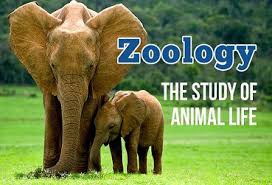Phylum Porifera – Zoology Notes – For W.B.C.S. Examination.
ফাইলাম পোরিফেরা – প্রাণিবিদ্যা নোট – WBCS পরীক্ষা।
Porifera animals are also called as Sponges. Sponges have managed to conceal their true animal nature for several centuries. They are sessile, profusely branched, have no clear way of capturing or eliminating food. They also show very little response to external stimuli. Some of the sponges are even green in color due to presence of symbiotic algae and hence were regarded as plants by many early researchers. Later they were proved as animals after the discovery of their feeding system and life cycle.Continue Reading Phylum Porifera – Zoology Notes – For W.B.C.S. Examination.
It was Robert Grant who coined the term Porifera which in Latin means pore bearing animals (L. Porus=pore; ferre=to bear). Huxley and Sollas first proposed the separation of sponges from eumetazoans. It is believed that sponges might have evolved from the colonial choanoflagellate protozoans. Sponges represent an evolutionary blind offshoot.
General Characters of Phylum Porifera
- They are distributed between Arctic to Temperate regions.
- Sponges are sessile and mostly marine. Some live in fresh water
- They are solitary or colonial in nature found attached to stones or molluscan shells or wooden pieces in the waters.
- Their body is vase-like, tubular, cushion-like or cylindrical in shape. They exist in various colours like bright red, yellow, orange, pink or violet or even white and black. Some sponges have symbiont algae and thus appear green in colour.
- Majority of sponges are asymmetrical and some are radially symmetrical
- They exhibit cellular grade of organisation. They exhibit functional division of labour. There is no relation between two cells. No organs are present in sponges.
- Body wall consists of two epitheloid layers (epitheloid resembles epithelium but lacks basal lamina and cell junctions): an outer pinacoderm and an inner choanoderm.
- Pinacoderm covers the outer surface of the body and also lines some of the internal cavities of aquiferous system. Flattened cells of pinacoderm are called as pinacocytes. Pinacoderm also has porocytes each of which encloses an ostium. Porocytes extend up to spongocoel.
- Choanoderm is composed of choanocytes. They have a collar of microvilli around the flagellum. Water is pulled through the ostia by the beating of the choanocytic flagella.
- Between the pinacoderm and choanoderm is a gelatinous mesohyl. Mesohyl has various types of amoebocytes like,
- Sclerocytes which produce spicules
- Spongocytes which produce spongin fibres.
- Myocytes are the contractile cells found around osculum.
- Archaeocytes are totipotent cells capable of giving rise to any other cell type.
- The central cavity is called as spongocoel or atrium. It opens outside through an osculum.
- The water circulatory system of sponges is called as canal system or aquiferous system. It helps in food acquisition, respiratory gas exchange and excretion. In an ascoid sponge, water enters the spongocoel through ostia and exits through osculum.
- Aquiferous system and high totipotent nature of the cells are the two characteristic features of sponges
- Mesohylar endoskeleton consists of inorganic (calcareous) spicules or proteinaceous (spongin) fibres or both. Spicules are designated according to the number of axes (Eg: Monaxon, triaxon, tertaxon) or according to the number of rays (Eg: monactinal, hexactinal, teractinal)
- Sponges are suspension feeders or filter feeders. Digestion is intracellular. Choanocytes engulf food particles suspended in water, partly digests and passes on to an archaeocyte for final digestion.
- Disposal of excretory wastes primarily ammonia and respiratory gas exchange occur by simple diffusion. Most cells of fresh water sponges contain contractile vacuole for Osmoregulation.
- Nerve cells and sensory cells are absent. If nervous system is present it is of primitive type in some species with bipolar or multipolar cells formed into a network. Sponges are capable of responding to a variety of environmental stimuli by the closure of osculum.
- Asexual reproduction takes place by fragmentation, budding and the formation of gemmules and reduction bodies.
- Sponges are capable of regenerating viable adults from fragments. Fresh water sponges and a few marine sponges produce small gemmules, which remain dormant during winter.
- Sponge cells have remarkable power of regeneration. Even if a sponge is divided into minute pieces, the cells aggregate to form functional sponge.
- Most sponges are hermaphrodite but exhibit protandry or protogyny. Spermatozoa arise primarily from choanocytes. Eggs arise from archaeocytes or differential choanocytes.
- Fertilization is cross or internal. Spermatozoa are taken into the aquiferous system of neighbouring individuals. Choanocytes transfer them to the eggs in mesophyl.
- Cleavage is holoblastic. Development is indirect and includes,
- Coeloblastula larva (holoblastula with flagellated cells) or
- Amphiblastula larva (Coeloblastula with flagellated & non-flagellated cells) or
- Parenchymella/parenchymula larva (Solid blastula with outer layer of flagellated cells) or
- Trichimella larva (solid blastula with flagellated cells around the equator)
For Guidance of WBCS (Exe.) Etc. Preliminary , Main Exam and Interview, Study Mat, Mock Test, Guided by WBCS Gr A Officers , Online and Classroom, Call 9674493673, or mail us at – mailus@wbcsmadeeasy.in
Visit our you tube channel WBCSMadeEasy™ You tube Channel
Please subscribe here to get all future updates on this post/page/category/website



 +919674493673
+919674493673  mailus@wbcsmadeeasy.in
mailus@wbcsmadeeasy.in






































































































